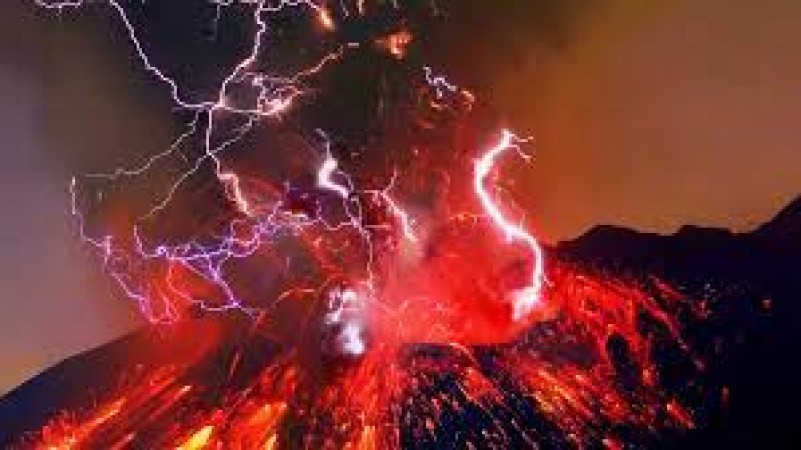
Volcanic eruptions have captured human fascination for centuries, with their raw power and the ability to shape landscapes dramatically. Understanding the underlying causes of volcanic eruptions is crucial for predicting and mitigating their potential hazards. In this article, we will explore the fascinating process behind volcanic eruptions and the factors that trigger these explosive events. A volcano is a geological feature that occurs when molten rock, gases, and volcanic ash are expelled from beneath the Earth's surface. These natural wonders can be found all over the world and are a result of the Earth's dynamic nature. While volcanoes are awe-inspiring to witness, their eruptions can also pose significant risks to surrounding communities and the environment.
2. What is a Volcano?
A volcano is essentially an opening or vent in the Earth's crust through which magma, volcanic rocks, and gases are released. The structure of a volcano can vary depending on its type, and there are three main types of volcanoes: shield volcanoes, stratovolcanoes (composite volcanoes), and cinder cone volcanoes.
2.1 Shield Volcanoes
Shield volcanoes have a gentle slope and are primarily formed by the accumulation of basaltic lava flows over time. These eruptions are typically non-explosive and allow lava to flow long distances.
2.2 Stratovolcanoes (Composite Volcanoes)
Stratovolcanoes are known for their towering and symmetrical appearance. They are built up of alternating layers of lava, volcanic ash, and other volcanic debris. Stratovolcanoes are often associated with explosive eruptions.
2.3 Cinder Cone Volcanoes
Cinder cone volcanoes are relatively small in size and are formed by the accumulation of volcanic fragments, such as cinders and ash, around the vent. These volcanoes tend to have short-lived eruptions.
3. The Volcanic Eruption Process
Volcanic eruptions are the result of complex geological processes that involve the movement of magma and the release of pressure. The eruption process can be divided into three stages: magma formation, factors triggering eruption, and the actual eruption itself.
3.1 Magma Formation
Magma is the molten rock material that exists beneath the Earth's surface. It is formed through the melting of rocks in the Earth's mantle due to high temperature and pressure.
3.2 Factors Triggering Eruption
Several factors can trigger a volcanic eruption, including:
3.2.1 Pressure Build-up
As magma accumulates beneath the Earth's crust, it exerts pressure on the surrounding rocks. When the pressure becomes too great, it can lead to a volcanic eruption.
3.2.2 Water Vapor
The presence of water vapor in magma can significantly impact eruption styles. Water vapor can lower the melting point of rocks and lead to explosive eruptions.
3.2.3 Tectonic Plate Movements
Volcanic eruptions often occur at plate boundaries, where tectonic plates collide or move apart. The movement of these plates can cause the release of magma.
3.3 The Eruption
Volcanic eruptions can be broadly classified into two types: effusive eruptions and explosive eruptions.
3.3.1 Effusive Eruptions
Effusive eruptions involve the relatively gentle release of lava from the volcano's vent. The lava flows out steadily and can cover large distances.
3.3.2 Explosive Eruptions
Explosive eruptions are more violent and involve the ejection of volcanic ash, rocks, and gases into the atmosphere. These eruptions can have far-reaching effects and pose significant hazards.
4. Common Volcanic Hazards
Volcanic eruptions can lead to various hazards that impact both the immediate vicinity and regions far away from the volcano. Some of the common volcanic hazards include:
4.1 Lava Flows
Lava flows are streams of molten lava that move down the sides of a volcano during an eruption. These flows can destroy everything in their path.
4.2 Pyroclastic Flows
Pyroclastic flows are fast-moving clouds of hot gas, ash, and volcanic fragments. They can travel at high speeds and are one of the most dangerous volcanic hazards.
4.3 Ashfall and Tephra
Volcanic ash can cover vast areas, disrupting air travel, damaging crops, and impacting the respiratory health of people and animals.
4.4 Lahars
Lahars are mudflows that occur when volcanic ash and debris mix with water, often due to heavy rainfall or melting snow on the volcano.
5. Famous Volcanic Eruptions in History
Throughout history, several volcanic eruptions have left a significant impact on the world. Some of the most famous ones include:
5.1 Mount Vesuvius, Italy (79 AD)
The eruption of Mount Vesuvius buried the ancient Roman cities of Pompeii and Herculaneum, preserving them for centuries.
5.2 Mount Krakatoa, Indonesia (1883)
The eruption of Mount Krakatoa in 1883 produced one of the loudest sounds ever recorded and caused a massive tsunami.
5.3 Mount St. Helens, USA (1980)
The eruption of Mount St. Helens in 1980 was one of the most destructive volcanic events in the history of the United States.
5.4 Eyjafjallajökull, Iceland (2010)
The eruption of Eyjafjallajökull caused widespread disruption to air travel in Europe due to the large ash cloud it produced.
Mastering Hot Topic Content: Engaging Your Audience with Timely and Trending Subjects
Mastering Twitter: How to Follow Topics for a Tailored Timeline